Easy Japanese Ginger Salad Dressing (5 Minutes)
Add a wonderful fresh zing to salads, veggies, and more with a delicious not-quite-authentic 5-minute version of this Japanese ginger salad dressing.
You will recognize the flavor profile if you’ve ever had the pleasure of tasting it on crispy iceberg lettuce at Japanese restaurants. This homemade dressing is super easy and customizable.
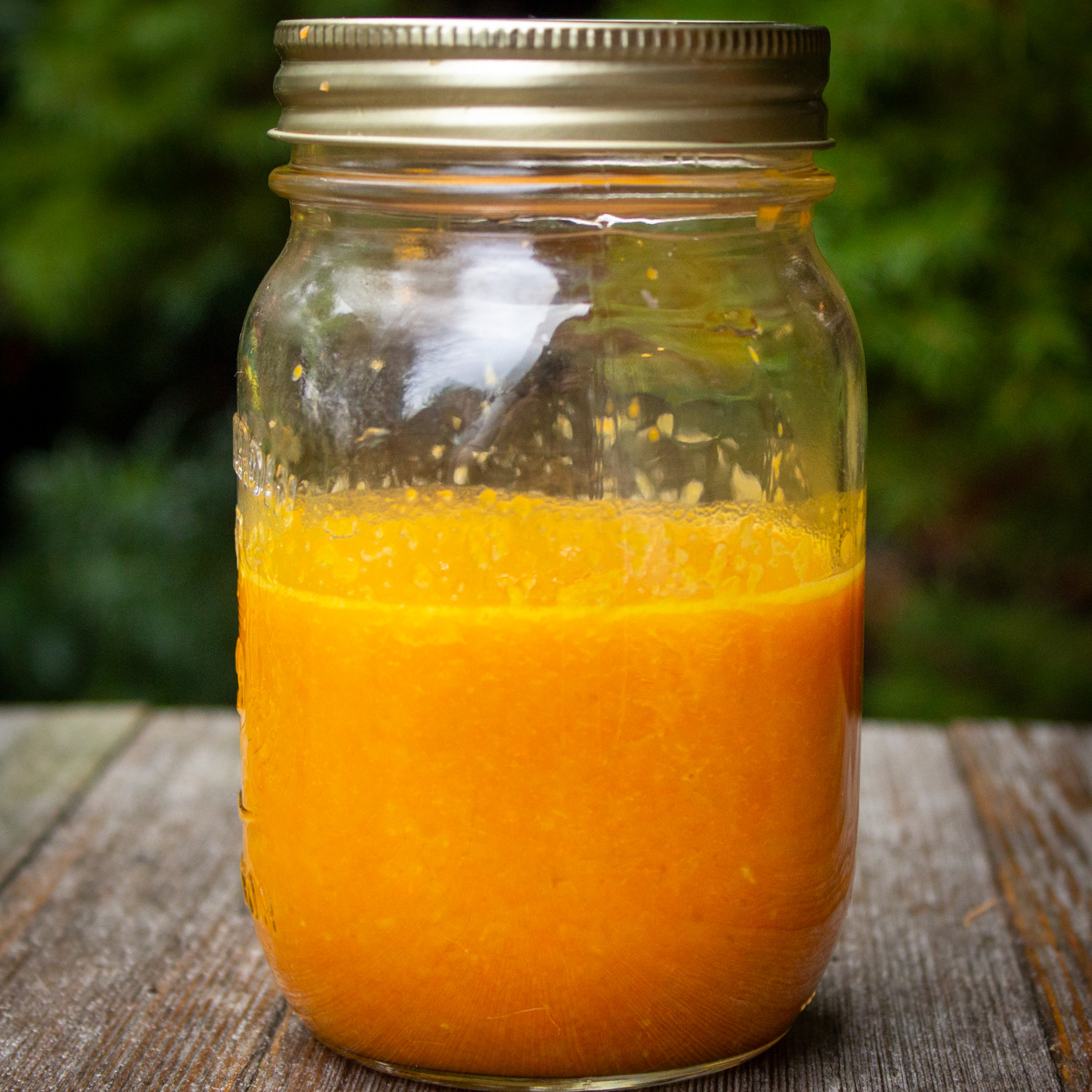
There are many types of Japanese salad dressings such as Wafu, Miso, Sesame, and Shoya. This Japanese-style carrot-ginger dressing is a twist on Wafu. A perfect way to serve fresh, vibrant flavors in your side salad with a nice balance of sweet and tangy.
What to expect
We amp up the typical ingredients in a ginger dressing for added sweetness, texture, nutrition, and flavor.
The dressing is easy to adjust with a little more of this and that to find the perfect balance of flavors that’s right for you.
As salad dressings go, this Japanese ginger salad dressing is on the healthier side – only 35 calories per tablespoon, lots of vitamin A and low saturated fat. Plus it’s vegan and can easily be made gluten free.
Ingredients – tailored to your taste
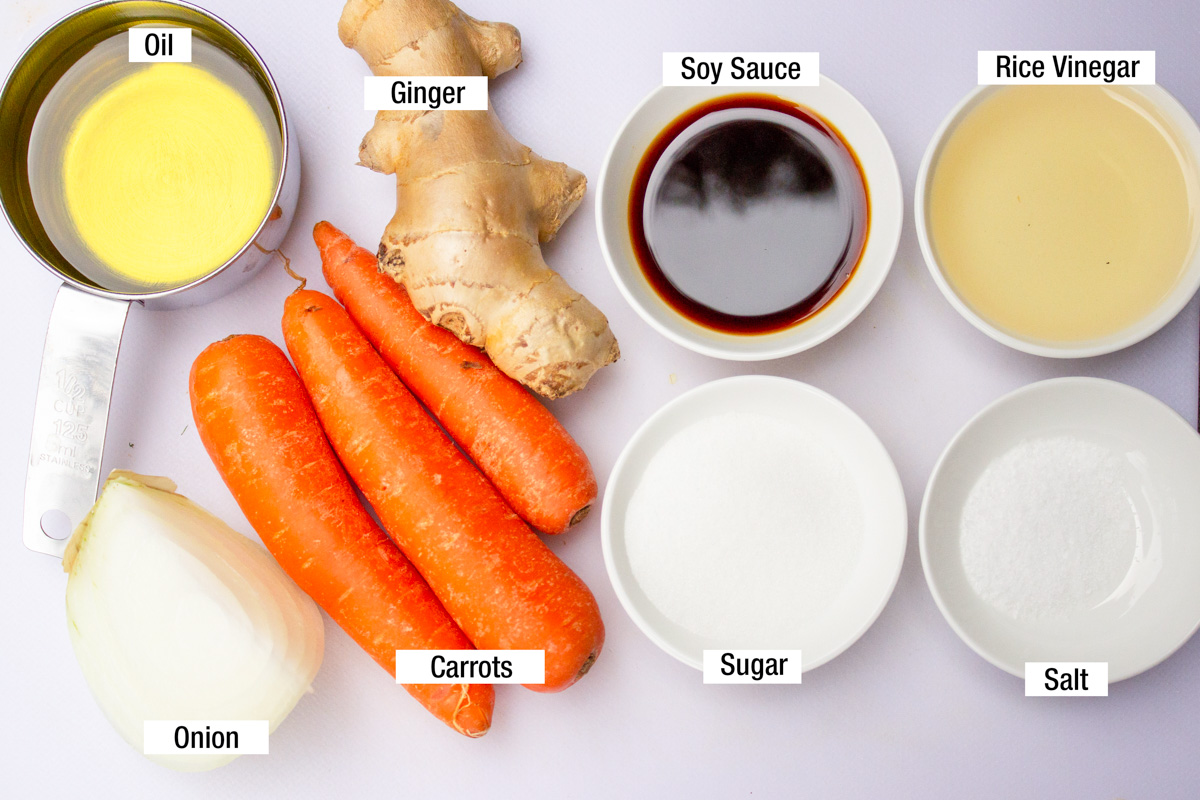
- Ginger: Fresh ginger has a lot more punch, vitamin C, fiber, and potassium but you can substitute it with ground ginger if needed. Or see ginger shortcuts below.
- White sugar: Substitute honey or brown sugar if you prefer (use the same amount)
- Rice vinegar: if you don’t have any, use apple cider vinegar or white vinegar.
Variations
- Add-ins: Try adding a dash of sesame oil for depth. Not too much though – you don’t want to overpower the dressing. Some recipes also include a tablespoon of mild white miso paste and celery. And you can add some heat with a pinch of red pepper flakes.
- Sweet-tart balance: Vary the sweetness and tartness to your liking by adjusting the rice vinegar and sugar.
- Gluten-free version: Use a gluten-free soy sauce substitute such as Tamari. Alternatively, just leave out the soy sauce.
Step by step instructions
In a nutshell: peel, roughly chop, blend, done!


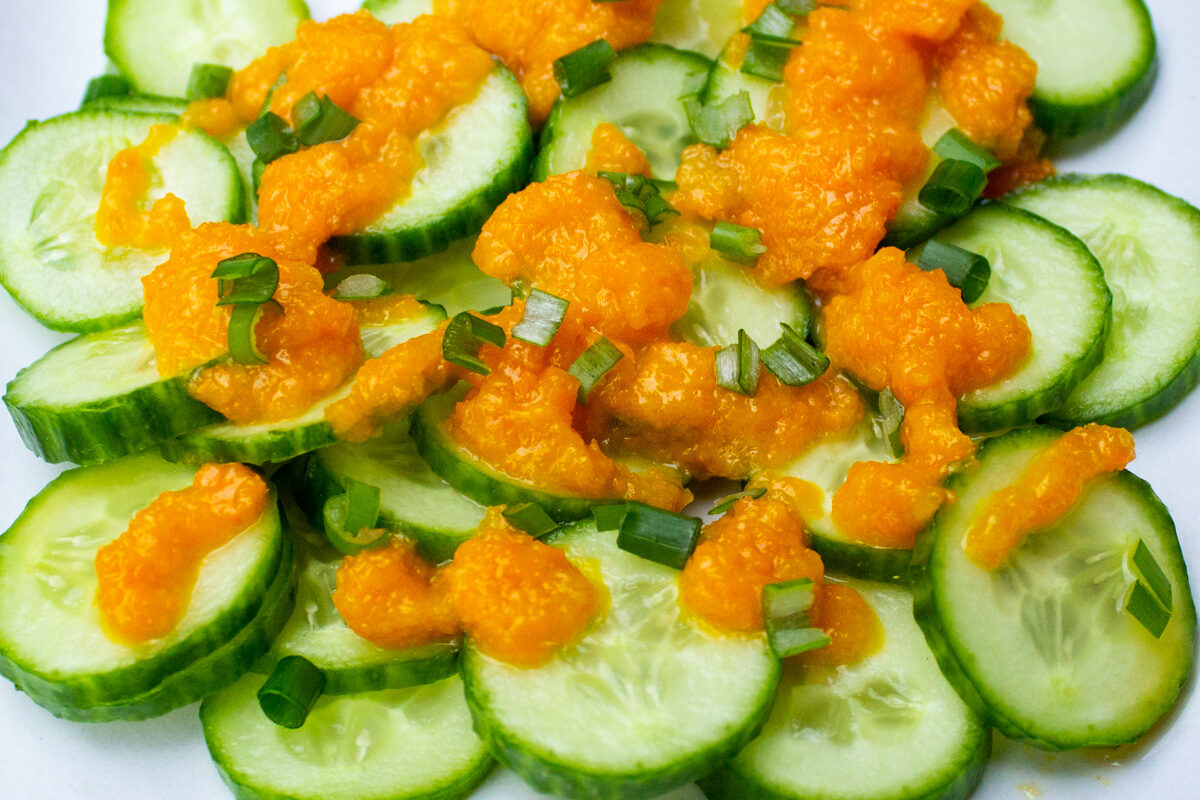
Ways to use Japanese salad dressing
Japanese salad dressing is typically served over crisp lettuce like iceberg or romaine. But it’s also terrific on:
- sliced Japanese cucumbers (as pictured) – this is one of my favorite uses – crunchy and gorgeous color combo.
- roasted or grilled fish like halibut, tilapia, sea bass, or roasted salmon stuffed with herbs
- drizzled over sushi, tofu, vegetable rice paper rolls, or Chinese vegetable fried rice
- as a topping for fish or shrimp tacos
- served with fresh snap peas as an appetizer or drizzled on steamed vegetables.
Recipe FAQs
Yes, you can use dried ginger instead of fresh ginger, but the flavor won’t be as fresh and vibrant. Approximately 1 tablespoon minced fresh ginger = 1/4 teaspoon ground ginger.
The amount of dressing on a salad will depend on how much salad you are serving. A good rule of thumb is about 2 tablespoons of salad dressing per serving. Some people eat a lot more though! I tend to follow that rule and serve extra on the side for those who want it.
Ginger Shortcuts
Instead of fresh ginger, you can use:
- frozen cubes of minced ginger sold in little packages. Brilliant invention!
- grated ginger in a jar
- ginger paste or
- ginger powder (ok in a pinch).
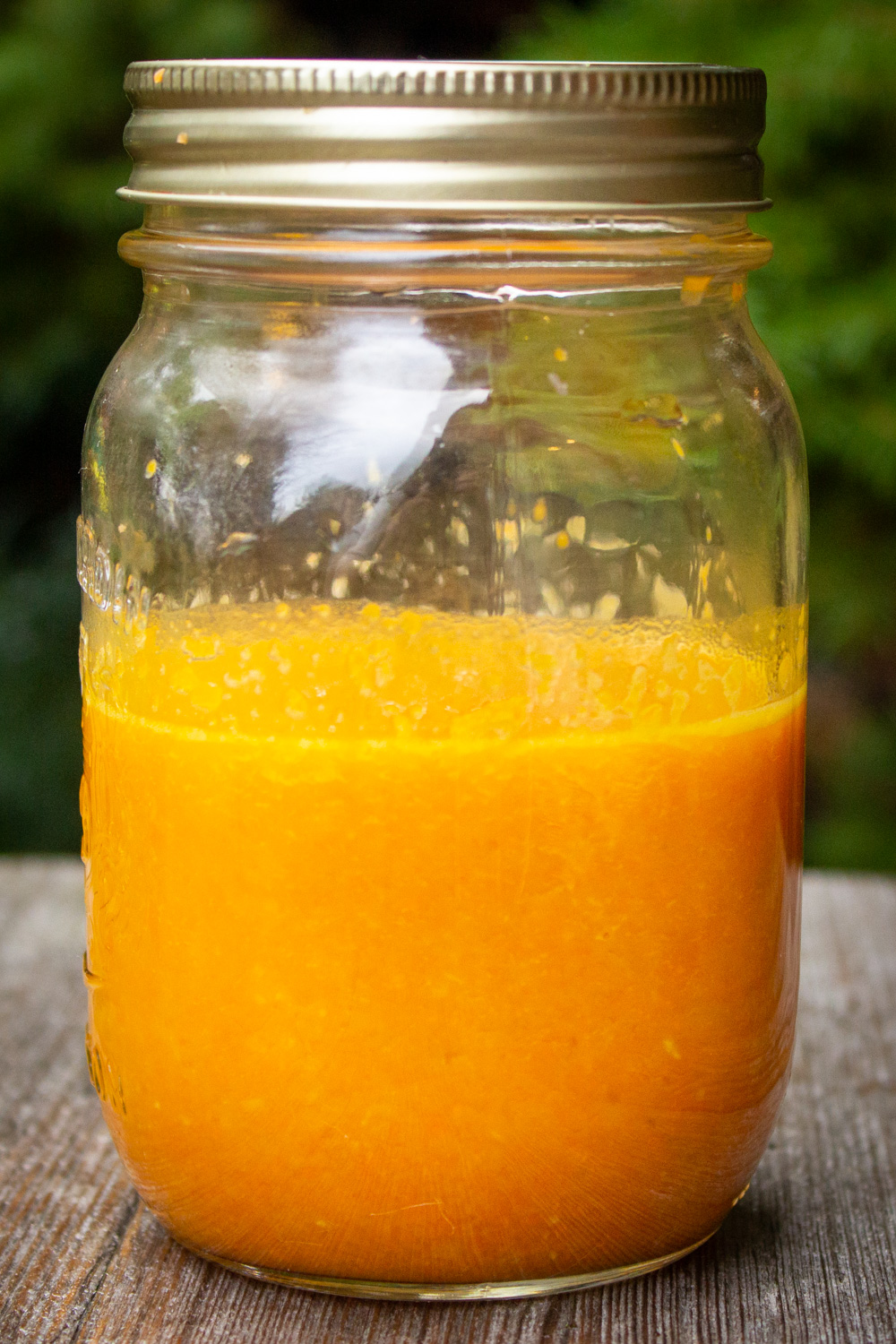
More easy salad dressings
- mango salad dressing
- maple balsamic dressing
- honey lemon dressing
- walnut dressing
- warm cinnamon dressing
Please leave a 5 star rating ***** with a comment in the recipe card below if you like the recipe, Thanks so much!
Japanese Ginger Salad Dressing (5 Min)
Equipment
- blender or food processor
Ingredients
- 1 carrot, peeled and roughly chopped (about 3/4 cup)
- 1/4 medium onion, chopped (about 1/4 cup)
- 1 1/2 inches fresh ginger root (or more to taste), peeled and chopped (3.8 cm), Note 1 (or 1 1/2 tablespoons finely chopped)
- 1 tablespoon white sugar (or honey or brown sugar)
- 3 tablespoons rice vinegar, Note 2
- 1 tablespoon low-sodium soy sauce (optional)
- 1/2 teaspoon kosher salt
- 5 tablespoons neutral oil canola, peanut, neutral olive oil
optional add ins
- 1/4 teaspoon sesame oil (optional) I add this
- 1/4 cup chopped celery
- 1 tablespoon mild white miso paste
- Garnish for salad: sesame seeds, green onion, chives
Instructions
- MAKE DRESSING: Place all ingredients in food processor or blender. Blend for about 2 minutes or until pureed, scraping down sides of bowl in between if necessary. Taste and adjust to how you like it – e.g. more vinegar, sugar, sesame oil salt, ginger, etc. If you like it thinner, add a tablespoon of water.Yield – approximately 1 1/4 cups (300 ml) or 20 tablespoons
Recipe Notes
- Ginger substitutes: use the equivalent of frozen ginger cubes, ginger paste or grated ginger in a jar. Or, in a pinch, use a rounded 1/4 teaspoon ground ginger (or to taste).
- Rice vinegar substitutes: apple cider vinegar, rice wine vinegar or white vinegar.
- Variations:
- Add-ins: Try adding a dash of sesame oil for depth (not too much), a tablespoon of mild white miso paste and a few tablespoons chopped celery. And you can add some heat with a pinch of red pepper flakes.
- Gluten-free version: Use gluten-free soy sauce substitute such as Tamari. Alternatively, just leave out the soy sauce.
- Make Ahead: Transfer salad dressing to a sealed container. Keep in the fridge for 4-5 days. Shake well before using. If it thickens up in the fridge, add a splash of water or oil, then shake.

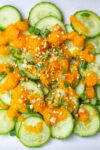
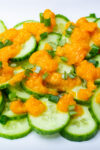
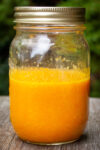
Yep, that’s Dee-lish! Quick and easy. Real fresh and lights up your salad!
Thank you Joe! Much appreciated 🙂
I really enjoyed the dressing. Also quick and easy to make.
Thanks for trying it ?